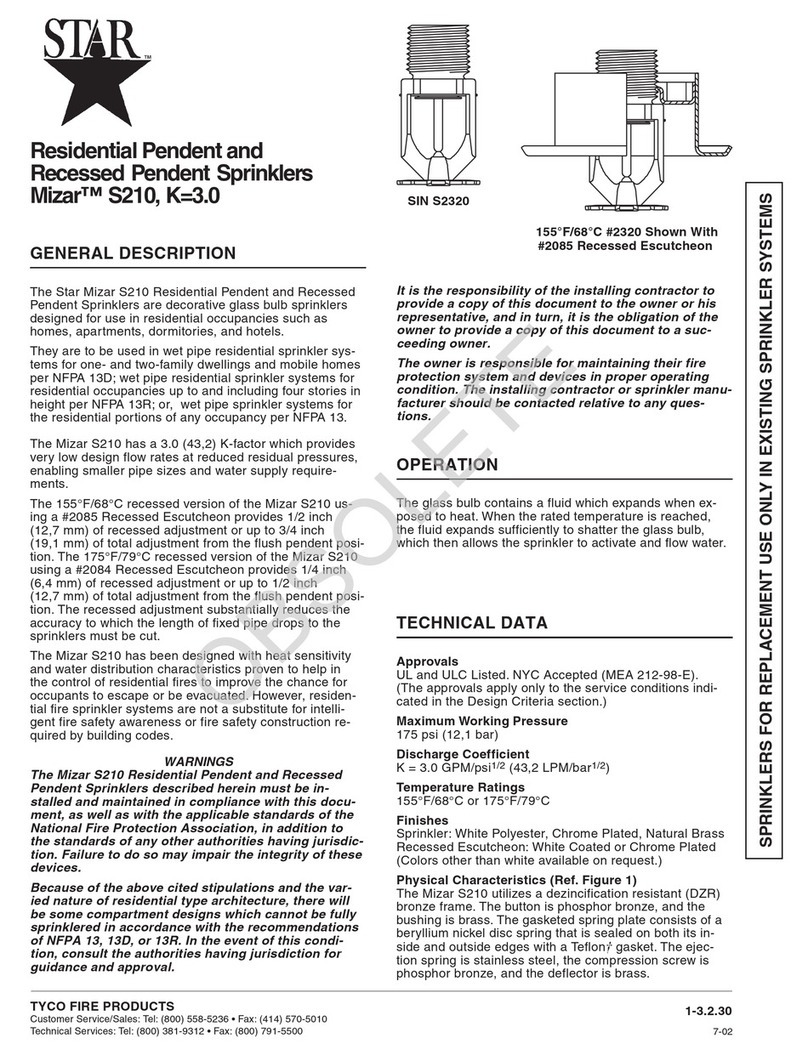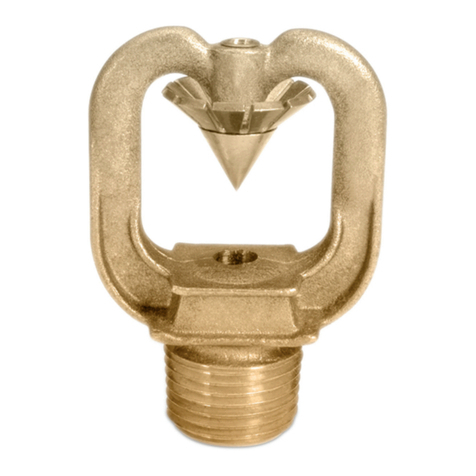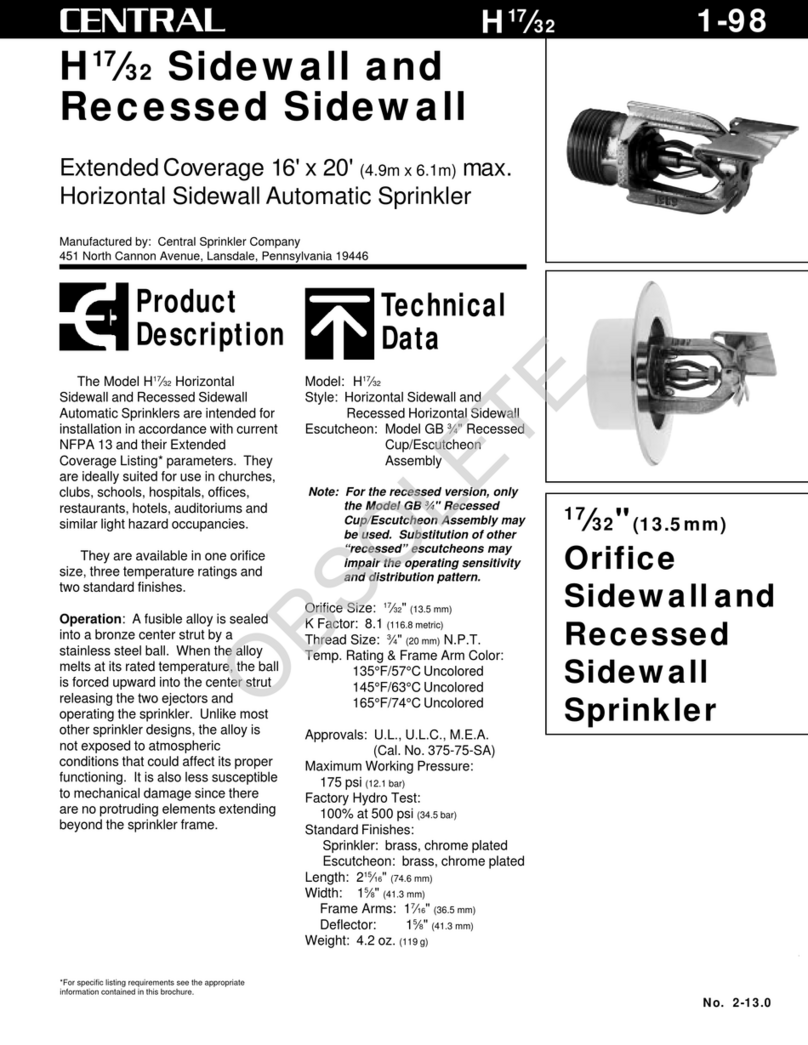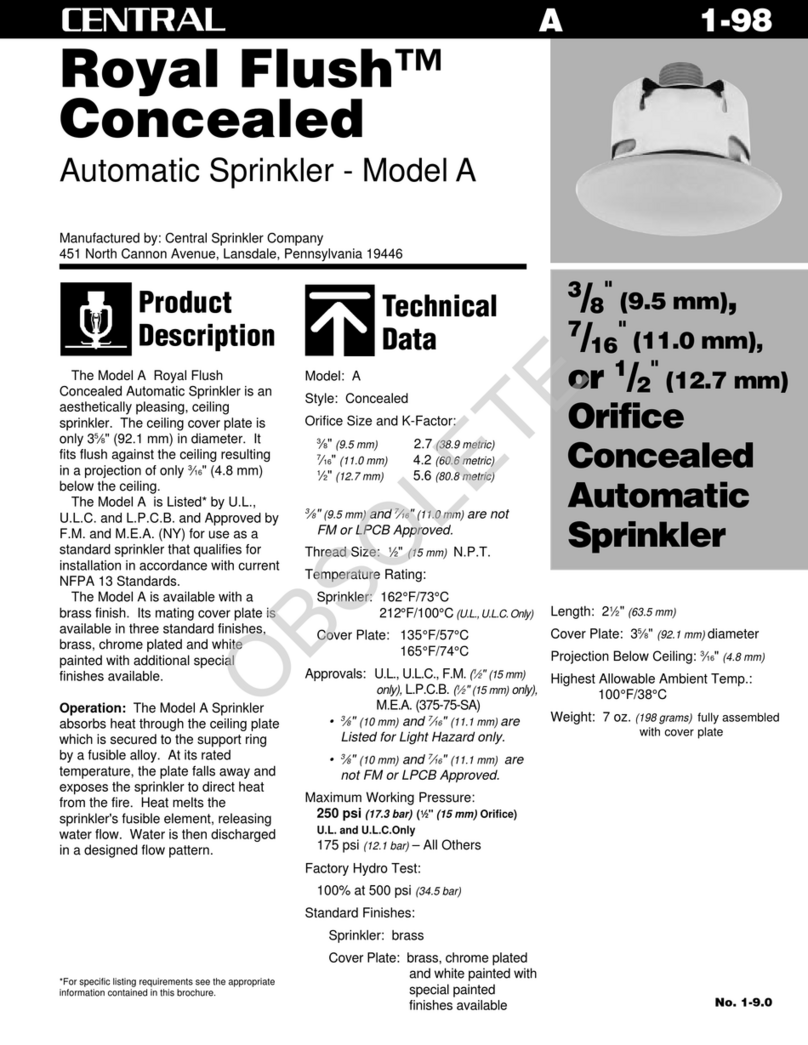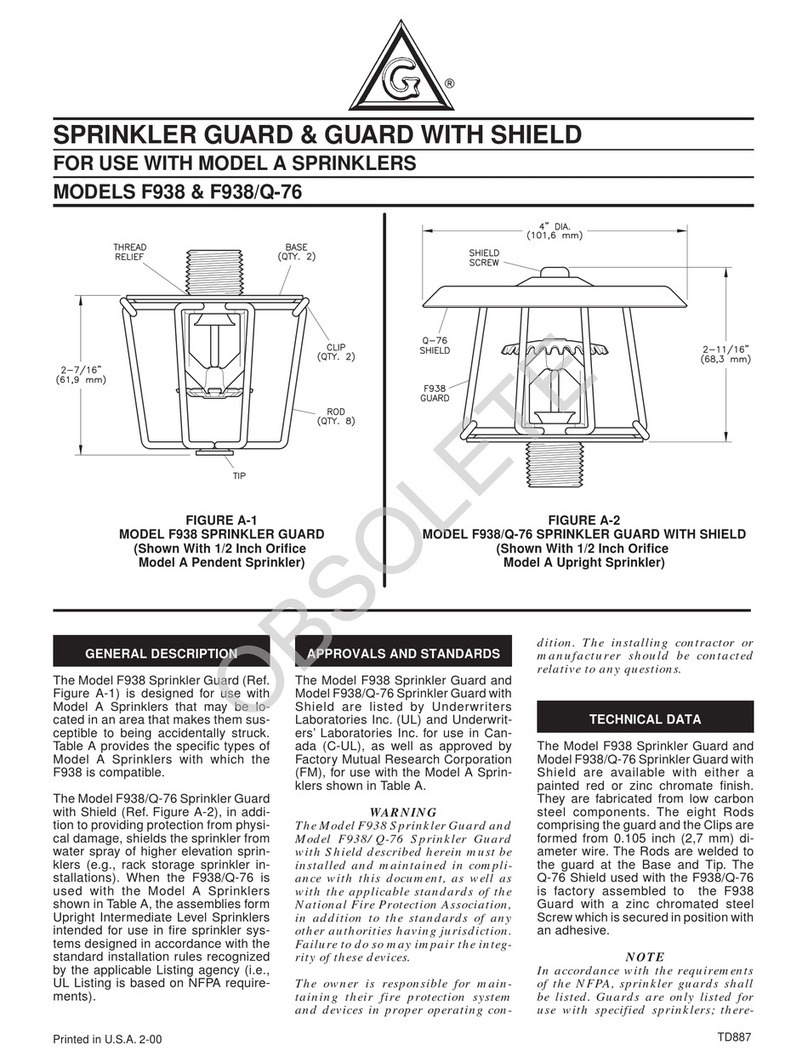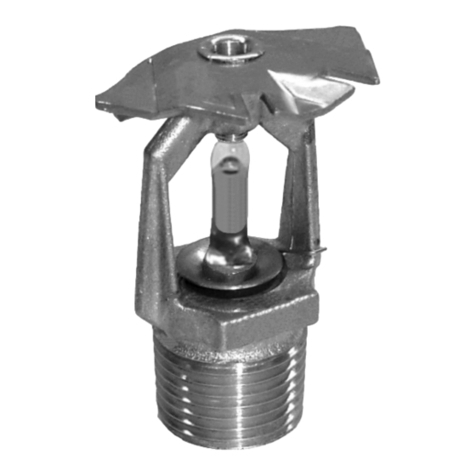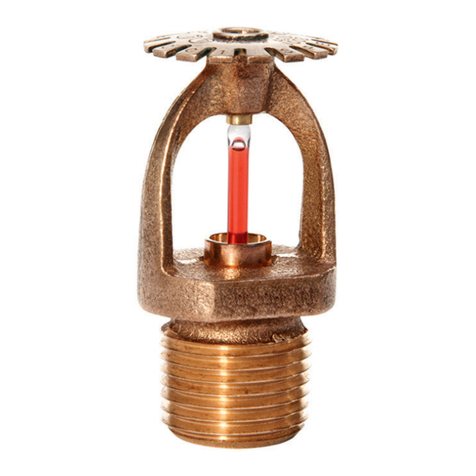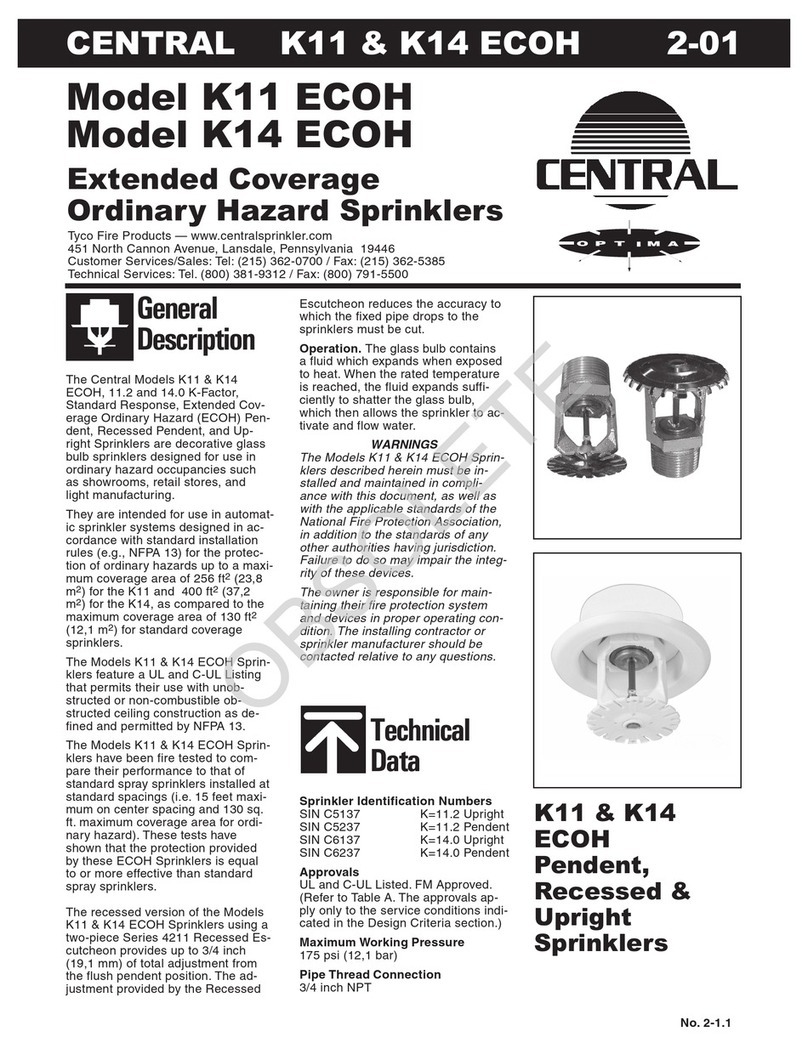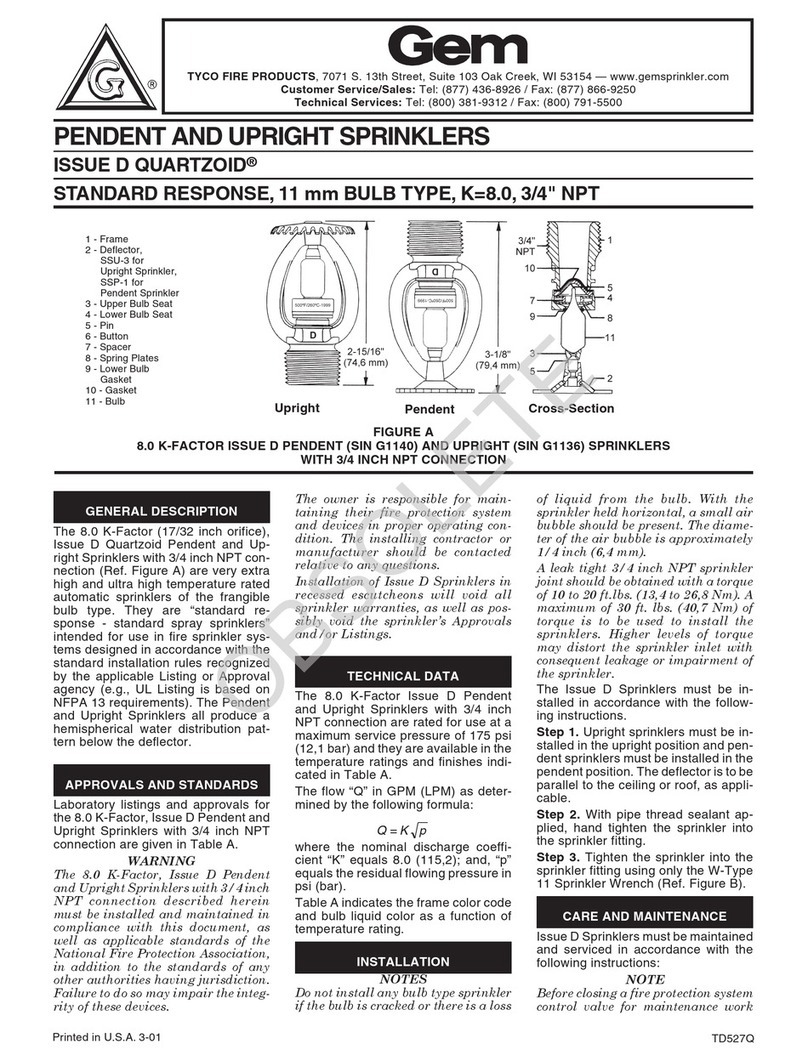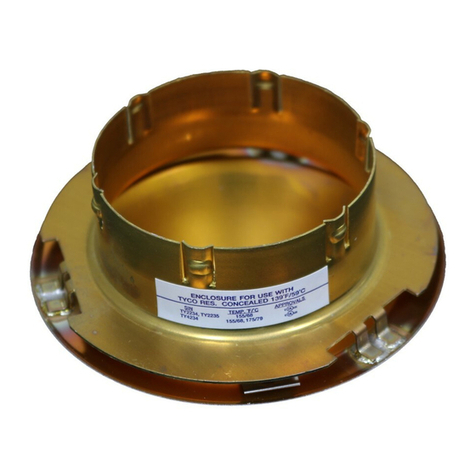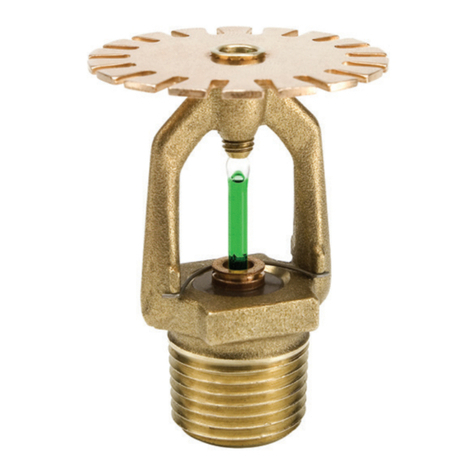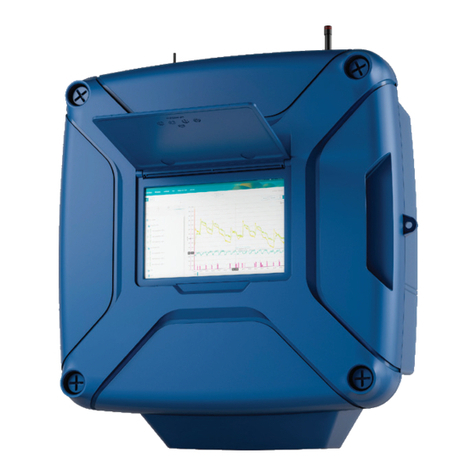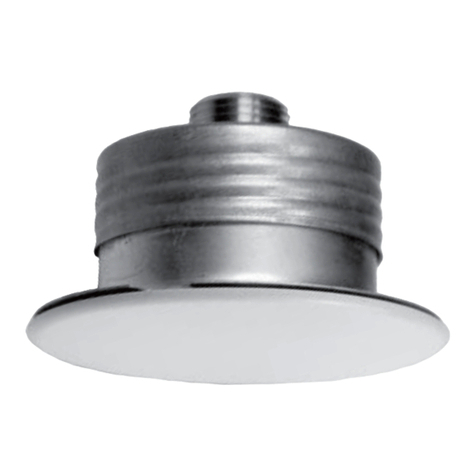
TFP425
Page 4 of 6
Copper sprinkler system piping
Any time copper piping is used in any
part of a fire sprinkler system, the
copper piping must be installed in con-
formance with all applicable standards
and requirements for copper piping,
including: NFPA 13, 13D, 13R and 25,
ASTM B 813, ASTM B 828, and Copper
Development Association (CDA). Any
soldering in any part of a sprinkler
system, either internally or externally,
must be done with use of only an
ASTM B 813 approved flux. Residual
flux must be thoroughly removed from
both the interior and exterior surfaces
of the piping before installing the sprin-
kler heads. The use of improper flux,
or the failure to thoroughly remove
proper flux, may result in corrosion of
the sprinkler head or stress cracking,
which in turn may cause the sprinkler
heads to develop leaks, operate unex-
pectedly, or not operate properly.
Installation
The TYCO RAPID RESPONSE Series
LFII Residential Flush Horizontal
Sidewall Sprinklers (TY2384) must
be installed in accordance with this
section:
General Instructions
The Protective Cap is to remain on the
sprinkler during installation until the
ceiling installation is complete. The
Protective Cap must be removed to
place the sprinkler in service.
A leak-tight 1/2 in. NPT sprinkler joint
Should be obtained by applying a
minimum to maximum torque of 7 to
14 lb-ft (9,5 to 19,0 N∙m). Higher levels
of torque can distort the sprinkler Inlet
with consequent leakage or impairment
of the sprinkler.
Do not attempt to compensate for
insufficient adjustment in the sprinkler
by under- or over-tightening the Sprin-
kler/Support Cup Assembly. Re-adjust
the position of the sprinkler fitting to
suit.
Each sprinkler must be inspected
before installation. Do not use any
sprinkler that exhibits any deformations
or cracks, including cracks on the pro-
tective cap.
Step 1. Horizontal sidewall sprinklers
must be installed only in the horizontal
position with their centerline of water-
way perpendicular to the backwall and
parallel to the ceiling. The top of the
deector is to face towards the ceiling,
as depicted in Figure 1B, with the front
edge of the deector parallel to the
ceiling.
Step 2. Install the sprinkler tting so
that the distance from the face of the
tting to the mounting surface will be
nominally 3/4 in. (19,1 mm) as shown
in Figure 1A.
Step 3. With pipe thread sealant
applied to the pipe threads, hand
tighten the sprinkler into the sprinkler
tting.
Step 4. Wrench tighten the sprin-
kler using only the Sprinkler Socket
or Wrench & Socket Combination
(Ref. Figure 2). The wrench recess of
the socket is to be applied to the sprin-
kler wrenching area (Ref. Figure 1A).
The Sprinkler Wrench must be correctly
aligned to slide over the Protective Cap.
After the leading edge of the Sprinkler
Wrench passes over the flat portion of
the Protective Cap, it must be rotated
and realigned to engage with the sprin-
kler wrenching area.
Conversely to remove the Sprinkler
Wrench, sufficiently pull the Sprinkler
Wrench so that it disengages from the
sprinkler wrenching area, and then
rotate the Sprinkler Wrench so that it
can pass over the Protective Cap.
Step 5. Use the “backwall tolerance
limit” indicator (Ref. Figure 1A) on the
Protective Cap to check for proper
installation depth. The finished wall
surface must line up within the 3/16 in.
(4,8 mm) range of the “backwall tol-
erance limit”. Figure 1A illustrates the
finished wall surface at the mid-point
of the “backwall tolerance limit”. Relo-
cate the sprinkler fitting as necessary. If
desired the Protective Cap may also be
used to locate the center of the clear-
ance hole. Apply chalk to the center
point of the Cap and then gently touch
the wall material against the center
point of the Cap.
Step 6. After the wall has been com-
pleted with the 2-1/4 in. (57,2 mm)
diameter clearance hole, use the Pro-
tective Cap Removal Tool (Ref. Figure
3) to remove the Protective Cap and
then push on the Escutcheon until its
flange comes in contact with the wall.
If the Escutcheon cannot be engaged
sufficiently to contact the wall and/or
the Escutcheon cannot be engaged per
Figure 1C (i.e., 3/16 in. (4,8 mm) to flush
with respect to the face of the sprinkler
body), relocate the sprinkler fitting.
SOCKET
#4949
RECESS
ACCEPTS
3/8" SOCKET
DRIVE
#4950
WRENCH & SOCKET
COMBINATION
WRENCH
FIGURE 2
SPRINKLER SOCKET AND
WRENCH & SOCKET COMBINATION
FIGURE 3
PROTECTIVE CAP
REMOVAL TOOL
